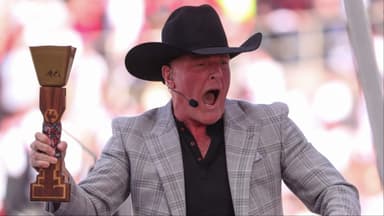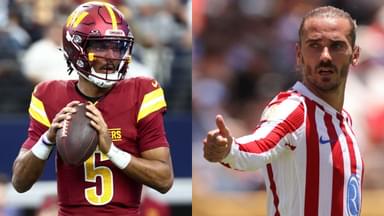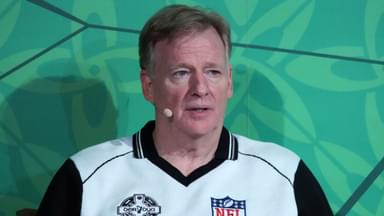There is perhaps no position in professional sports that embodies the phrase “unsung heroes” quite like the offensive line in American football. They never get to carry the ball, score, or do anything particularly exciting or highlight-reel worthy. But the hogs, as they are affectionately called in football circles, are absolutely crucial.
Advertisement
As Andrew Whitworth, who spent 16 years on an NFL offensive line from 2006 to 2021, said recently, it’s one of the only positions in sports that is “literally there to serve.” Offensive linemen win no individual glory, which makes their contributions all the more meaningful and impressive.
Whitworth is now in the podcast space. Go figure. But he and his co-host Ryan Fitzpatrick recently had a big guest on the show: NFL commissioner Roger Goodell. One of the topics they discussed was the recent rise in recognition for the men of the NFL’s trenches.
And during the discussion, Goodell went on to talk about trying to help fans better understand O-linemen’s contributions so they can receive more credit, like their skill-position counterparts.
“Understanding what offensive linemen actually do. They don’t get enough credit for what they do. At the end of the day, controlling the offensive line is key,” Goodell said.
“As a quarterback or as a running back or frankly, even as a defense, because if you can control the football, you’re keeping the other guys off the field,” he added.
While they don’t get the trophies or the plaudits from the media and fans, let’s not feel too sorry for offensive linemen here. Especially left tackles. Those guys that generally protect their QB’s blindside from the opposing team’s best edge rusher get paid handsomely.
There are only a handful of QBs, WRs, and edge rushers who get paid more than the highest-paid left tackle: Rashawn Slater of the Los Angeles Chargers, who’s making over $28 million a year.
In fact, according to Spotrac, if you took all the players in the league last year at each individual position and averaged out their salaries, left tackle would lead the way at just under $9 million. Right tackles checked in at second with just over $5 million, while QBs were just below $5 million. And as Fitzpatrick cheekily noted, guys like Jason Kelce have also led the offensive linemen charge into the advertisement and endorsement realms.
But they don’t just get paid for being stout sentinels watching the back of their QB. They also get paid for the intangible leadership qualities often found in NFL hogs. Goodell called offensive linemen the “best leaders” in football. No matter what you think of the guy, that’s high praise.
“It’s also the position where you have to be the greatest teammate. All five of those guys up front better know what’s going on… I find that offensive linemen are probably the best leaders. And I say that from all the experience I’ve had off the field. They do their homework, they come prepared. They’re ready to mash it up and to talk about something and try to get to a better place. And they care about the team.”
For decades, offensive linemen were essentially the only set of players that had no chance at any of the major NFL awards: MVP, Offensive Player of the Year, or Defensive Player of the Year. But for the first time in 2025, the NFL will be handing out a brand new “Protector of the Year” award for the best offensive lineman in football.
Goodell is excited to see how the award will bring more attention to the position. And he says he got input from many offensive linemen—including Whitworth—when brainstorming the idea. Retired perennial Pro Bowlers like Whitworth are likely feeling a little bittersweet that the award is finally here, but they’re not still around to win it. Overall, though, it’s a massive win for the hogs.







